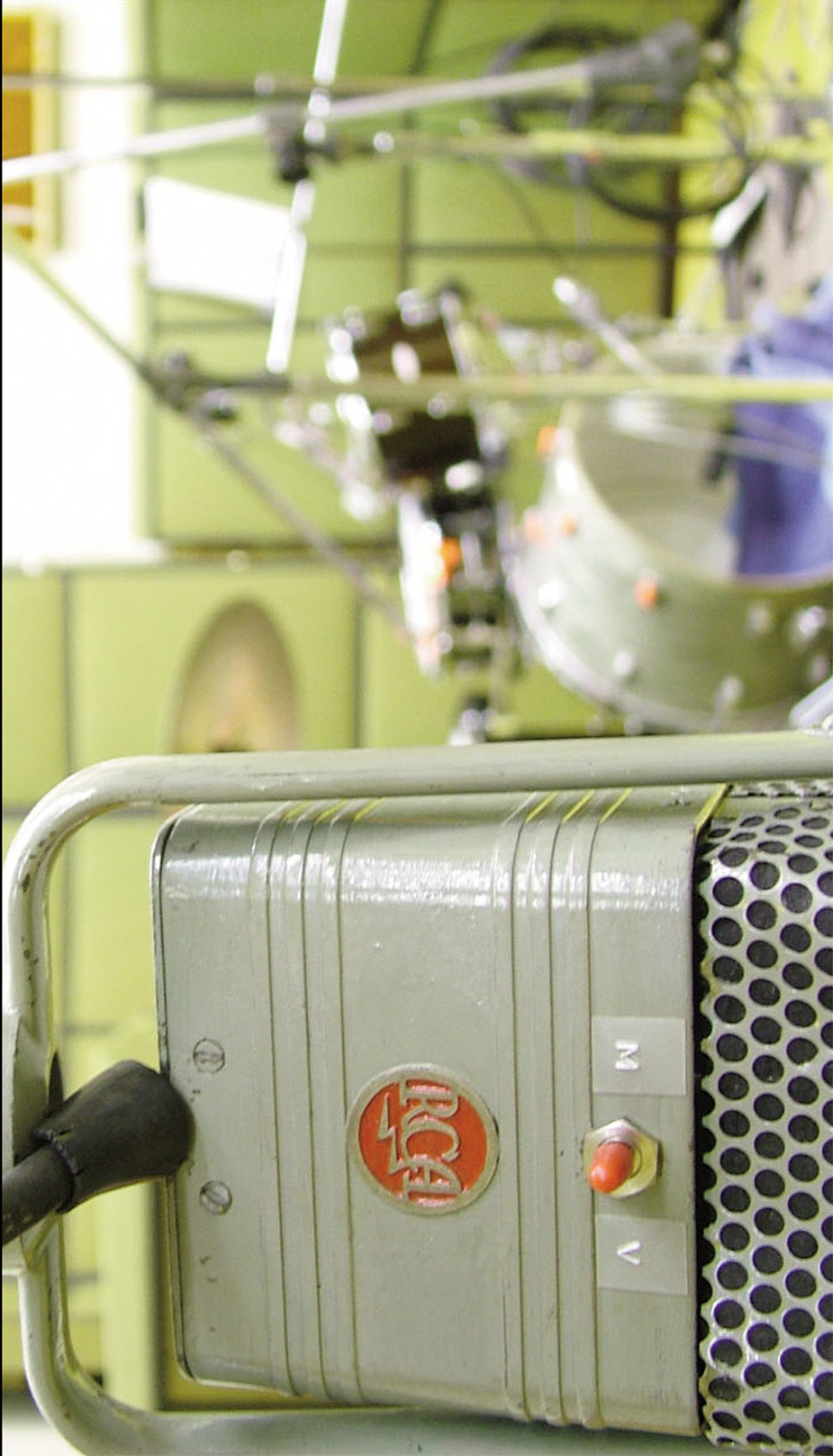So I've been engineering long enough that the entire concept of studio monitors has changed. The ubiquitous, dual 15'', soffit-mounted monitors are not usually the "go to" reference, since smaller nearfield monitors came on the scene. At first, these smaller monitors were mostly re-appropriated home speakers (NS-10... "cough") and they certainly had some value; they offered a bit more of a "living room" reference as compared to the tri-amplified beasts that had been part of the front wall of the control room. But in many cases, these new smaller speakers had their shortcomings. This wasn't really a problem unless they were used as the only monitor source, which is exactly what started to happen. While somewhat flawed monitors can deliver valuable information when referenced in combination with other speakers, overall translation can really suffer if they are used as the only source for mixing.
As smaller nearfields became more popular and more available, people demanded more from them. They shifted away from being the "home speaker reference" to taking over the role of the "mains." This meant that better accuracy and performance was needed. Even if the monitor speaker is small, good performance is still expensive to build. With some higher performance nearfields having a $10,000 price tag, we really have to weigh the compromise of price verses performance. The Ocean Way Audio Pro2A offers quite a nice option that makes that decision easier.
Okay, first the raw specs. The Pro2A has a fairly conventional cabinet design, except for the fact that it vaguely resembles the Transamerica Pyramid building in San Francisco. (It's wider on the bottom than it is on the top.) It's a two-way ported system with an 8'' woofer and a silk-dome tweeter. This doesn't sound too esoteric, but don't let that fool you. The woofer is aluminum, which according to Ocean Way owner Allen Sides [Tape Op #106], allows for a higher crossover frequency, which in turn supports higher volumes and greater impact for a cabinet of this size. After listening, I tend to agree. Each monitor is bi-amplified with two 125 W Class D amps, one for each driver. The monitors accept both balanced analog and AES digital inputs.
Okay, now the important stuff: translation, sound, and overall fun factor. I saw a video of Allen Sides talking about these speakers, and he said something that caught my attention, because it has been one of my mantras; Allen just wanted to "mix" and not think about the characteristics of the speakers, and have the mix just translate. Now in reality, it's not always that simple. We all have different preferred tastes in monitor characteristics. If not, there would be one monitor that everyone used, as deemed "the best." So no matter how great, any monitor has a degree of a learning curve to totally understand the translation. But in my experience, with a pair of Pro2As, I was able to "just mix."
So, how is the sound? Where to start? Let's talk about low end. First of all, I'm glad we can talk about it, because it exists! That's not something you can always take for granted with an 8'' nearfield. There actually is definition in the low frequencies, and not the floppy "band-pass" sort. Actual, controlled, low end. Now, that doesn't mean you couldn't add a sub for more thump in the last octave. But the Pro2A performs very solidly, despite its compactness. Now, for the rest of it.
This is not a subtle monitor. It is "in your face," but that certainly doesn't mean harsh. It is a very present-sounding monitor, revealing a great deal of detail. The transients are all there. You can easily hear your EQ changes while mixing. Imaging is good. The sweet spot is wide and balanced, with no perceived response changes as you move left to right.
I mixed some tracks trying not to get my brain in the way — just trying to make it sound the way I wanted it to on the Pro2As. With any monitor system, there is usually a "getting used to it" procedure that involves checking the mixes on various playback systems. Then, you make mental notes about what you have to remember about the monitors' idiosyncrasies. This list was very short for the Pro2A. The lows and mids offered a near-perfect translation to all of the playback systems I tried. The only thing to which I had to make a slight adjustment was the very top end. I found I needed to very lightly boost the high frequencies while mixing — by less than 1 dB. Then the sound and translation fell into place wonderfully. To be clear, I did not interpret this as a fault of the speaker, but rather a very minor "learning curve" adjustment that I had to make for myself.
The built-in Class D amps didn't show signs of strain, even at higher volumes. In fact, the Pro2A can crank out a surprising amount of SPL without breathing hard. The speaker really does deliver "no compromise" performance, and it would have no trouble in the role of a primary monitor.
Although this model is the least expensive in the Ocean Way lineup, it certainly reflects the pedigree of the larger systems. The shocking thing is the price/performance ratio — $3,500 for a pair. While the Pro2A isn't an entry-level monitor, it performs like a product with double the price tag. If you want to step up from the "music store" caliber of speakers, do yourself a favor and take a look at a pair of these. It's well worth the investment.




_disp_horizontal_bw.jpg)